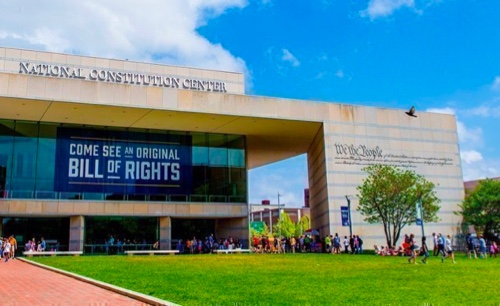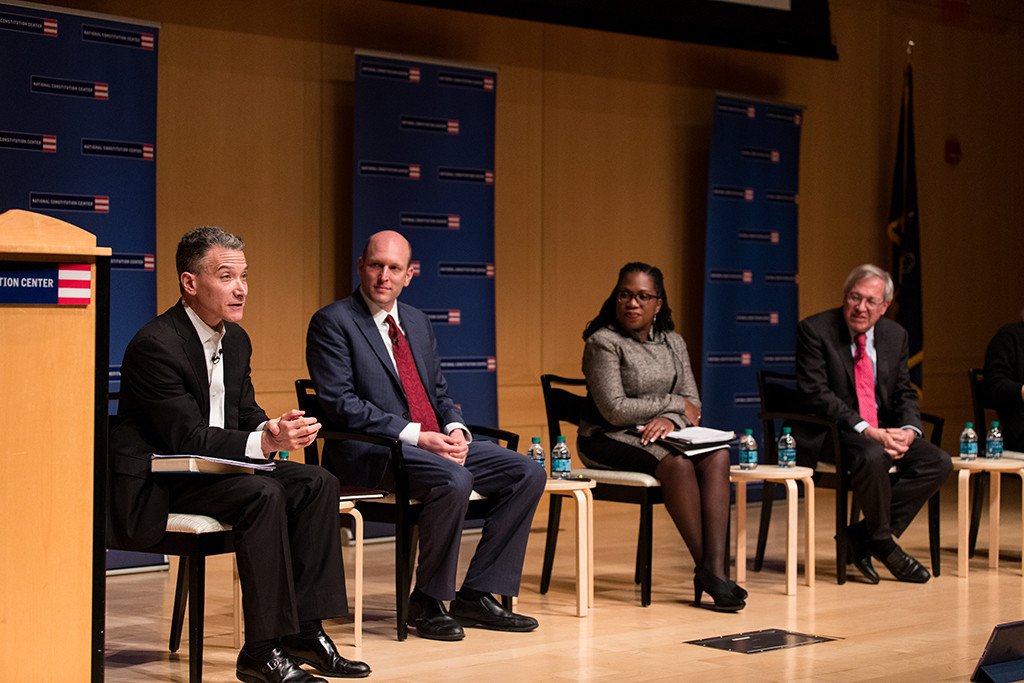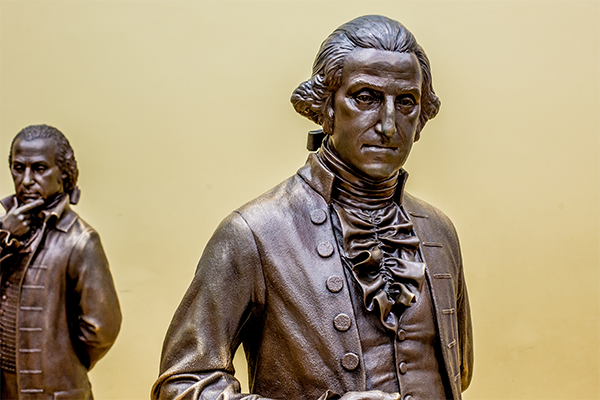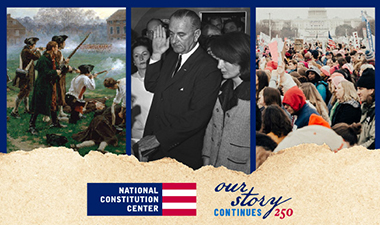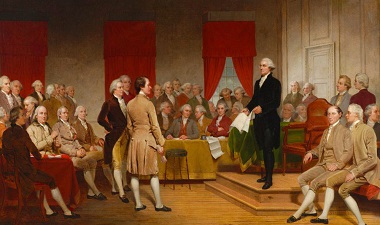President Donald Trump’s legal battles will dominate the new term of the U.S. Supreme Court even as the justices once again wade into culture war issues such as gun regulations, LGBTQ rights, and money in elections.
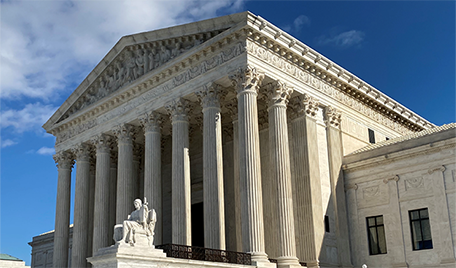 Trump’s legal battles actually have dominated the Supreme Court’s work for most of 2025. The rash of executive orders provoking lawsuits and many district court rulings blocking those orders have driven the administration to the high court seeking emergency relief. The Supreme Court’s conservative majority has largely favored the administration by granting relief.
Trump’s legal battles actually have dominated the Supreme Court’s work for most of 2025. The rash of executive orders provoking lawsuits and many district court rulings blocking those orders have driven the administration to the high court seeking emergency relief. The Supreme Court’s conservative majority has largely favored the administration by granting relief.
But now the merits of some of those executive orders are before the justices in the new term and others are moving quickly towards them. At the end of the term, the nation could see a restructuring of the separation of powers and possibly an extraordinary expansion of executive authority.
For Trump, the new term that opens today (Oct. 6) presents the greatest risk to the centerpiece of his economic policies. The justices will determine whether his imposition of tariffs was authorized, as Trump argues, by the federal International Emergency Economic Powers Act (IEEPA).
The act gives a president the power to regulate imports when there is an extraordinary threat to the nation’s national security, foreign policy, or economy. That authority follows the president’s declaration of a national emergency. Trump argues that “regulate” covers the imposition of tariffs.
The challengers include a group of small businesses and 11 states. The U.S. Court of Appeals for the Federal Circuit, affirming the U.S. Court of International Trade, ruled in their favor. That court held that the federal act did not authorize the tariffs, did not mention tariffs and Congress had not explicitly delegated authority to the president to impose tariffs under the act.
The justices have two tariff cases to be argued in November: Trump v. V.O.S. Selections and Learning Resources, Inc. v. Trump.
In January, the justices will hear arguments in a second Trump legal fight, this one involving Lisa Cook, a member of the Federal Reserve Board of Governors. Trump attempted to fire Cook for alleged mortgage fraud before she became a board member. Under federal law, board members, appointed by the president and confirmed by the Senate, may be removed only “for cause,” which is undefined in the law. Trump claims his allegations against Cook are sufficient cause.
Cook sued over her firing and a federal district judge temporarily blocked her dismissal while her lawsuit moved through the courts. Trump asked the Supreme Court to stay that judge’s order, but the high court delayed a decision, instead, ordering oral arguments on the administration’s request in Trump v. Cook.
The president’s removal power is also an issue in Trump v. Slaughter. The president fired Rebecca Slaughter, a Democratic appointee to the Federal Trade Commission. Congress prohibited removal of FTC members except for “inefficiency, neglect of duty, or malfeasance in office.” In a 1935 decision, the Supreme Court ruled that Congress may restrict a president's power to remove members of the FTC and other agencies performing “quasi-legislative or quasi-judicial” functions, without violating the Constitution.
But the Supreme Court has been chipping away at that 1935 precedent, Humphrey’s Executor v. United States in a series of recent rulings on the executive’s removal authority. The Slaughter case may be the precedent’s last gasp.
Moving away from Trump’s efforts to expand executive power, the justices have a full plate likely to capture public attention and trigger public debates. Throughout its 20-year history, the Roberts Court, named for Chief Justice John Roberts Jr., has shown little desire to shy away from hot button issues, reflecting confidence in its ability to decide them.
Here is a quick look at what is ahead for the Supreme Court:
Conversion Therapy
Colorado and 20 other states have laws prohibiting mental health professionals from using conversion therapy on minors because it is considered unsafe and ineffective. The purpose of conversion therapy is to change a person’s gender identity or sexual orientation. Talk therapy with that purpose falls under Colorado’s prohibition.
The justices in Chiles v. Salazar will decide whether a ban on talk therapy that seeks to change gender identity or sexual orientation violates the First Amendment’s free speech clause. Kaley Chiles, a licensed therapist, challenged the Colorado law. She argues that the law unconstitutionally restricts speech based on its subject matter and viewpoint. The state counters that there is no First Amendment violation when a state regulates medical treatment that falls below a reasonable standard of care, as talk therapy with this specific purpose does.
Transgender Athletes
The justices will examine two state laws that base participation in women’s and girls’ sports on a person’s biological sex. Little v. Hecox involves Idaho’s Fairness in Women’s Sports Act, and West Virginia v. B.P.J. examines that state’s law barring male students (those whose biological sex at birth is male) from teams designated for female students.
Lindsay Hecox is a transgender woman who wanted to compete on Boise State University’s track and cross country female teams, recently asked the Supreme Court to dismiss her case as moot. Her lawyers told the court that she will no longer play sports in Idaho. The state has objected to dismissing the case. The justices have not acted on her request. Hecox argues the state law violated the equal protection clause of the Fourteenth Amendment.
The West Virginia case also makes an equal protection clause challenge but is slightly different from the Idaho challenge. A 13-year-old transgender girl also argues that Title IX prevents a state from designating girls’ and boys’ sports teams based on biological sex determined at birth. Title IX prohibits recipients of federal funds from discriminating on the basis of sex in their programs or activities.
Guns, Redux
Gun-related cases never seem far from the Supreme Court docket since the justices in 2008 upheld an individual right to possess a gun in the home. In more recent decisions, the Court’s conservative majority has expanded the Second Amendment’s protection of that right.
In the new term, the justices will examine the constitutionality of Hawaii’s law prohibiting anyone with a concealed carry permit from bringing a handgun onto private property that is open to the public without first getting the property owner’s permission. The challengers to the law in Wolford v. Lopez also argue that the lower court failed to follow Supreme Court precedents in deciding what are “sensitive places” under Hawaii’s restriction of concealed weapons.
Campaign Money
One of the few remaining limits on money in elections restricts the amounts that political parties can spend in coordination with their candidates. The spending limits are in the Federal Election Campaign Act.
The National Republican Senatorial Committee and others argue in the high court that the spending limits violate the First Amendment by burdening their ability to promote their candidates. In 2001, the Supreme Court upheld the act’s spending limits in FEC v. Colorado Republican Federal Campaign Committee, explaining that coordinated spending may be restricted to “minimize circumvention of [individual] contribution limits.” But the challengers in National Republican Senatorial Committee v. Federal Election Commission contend that under the Court’s current approach to campaign spending the 2001 precedent is no longer good law.
Voting Rights
Last term, the justices did not resolve two voting rights cases from Louisiana and ordered reargument in the new term. The cases, Louisiana v. Callais and Robinson v. Callais, involve claims that Louisiana engaged in an unconstitutional racial gerrymander when the legislature drew a second majority black congressional district.
At the heart of the cases is Section 2 of the Voting Rights Act of 1965. Section 2 prohibits voting standards, practices or procedures that discriminate on the basis of race, color, or membership in a language minority group. That prohibition applies nationwide. Civil rights groups and others fear that the justices will once again weaken the power of the Voting Rights Act, a fear based on recent rulings making challenges to voting discrimination more difficult to make and win.
Justice Clarence Thomas and others have suggested that Section 2 is unconstitutional because it requires the consideration of race in redistricting which conflicts with the Fourteenth Amendment’s equal protection clause.
Dreadlocks
Damon Landor, a Rastafarian who wore his long hair in dreadlocks for religious reasons, had his head forcibly shaved by prison officials while incarcerated in a Louisiana prison. He is asking the justices in Landor v. Louisiana Dept. of Corrections and Public Safety whether he can seek damages against the warden and others in their individual capacities for a violation of the federal Religious Land Use and Institutionalized Persons Act. The act applies to state and local governments.
There are other important cases on the argument docket thus far. The justices will continue to add cases until about the middle of January. The administration has filed its appeal of a lower court ruling against Trump’s birthright citizenship executive order. This is just the beginning.
Marcia Coyle is a regular contributor to Constitution Daily. She was the Supreme Court Correspondent for The National Law Journal and PBS NewsHour who has covered the Supreme Court for more than three decades.
